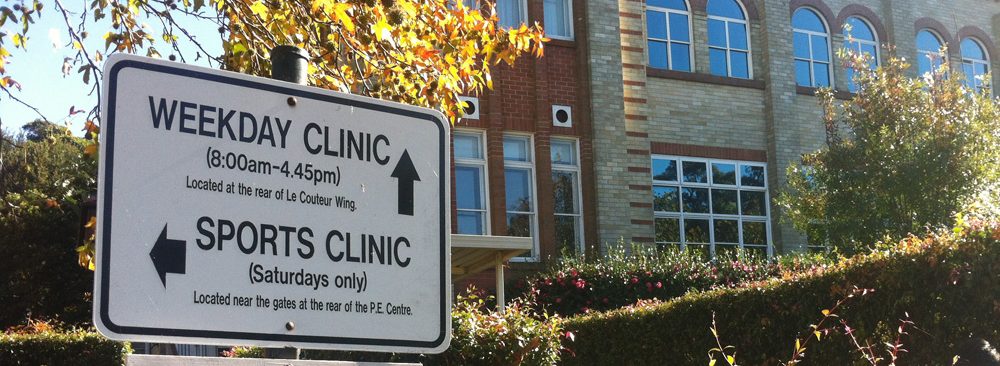What is sinusitis?
With the cool change in weather, I am not surprised at seeing more boys with head colds and also quite a few last week complaining of sinus pain.
Sinuses are hollow cavities in the skull located in the forehead, cheeks and between and behind the eyes. They are lined with the same mucous membrane as the nose and mouth and help prevent infection by trapping particles of dust, dirt or other pollutants. Sinuses are all connected to the nose by tiny tunnels that can easily get blocked with mucus.
Sinusitis can be an acute infection following a common cold. Or it can be a chronic infection lasting longer than 12 weeks due to untreated allergies or if there are structural problems with the nose. Sinuses are usually not fully developed until early teens so young children do not commonly get sinusitis.
Typical symptoms of sinusitis may include:
- Blocked nose
- Facial pressure over the sinuses, especially when leaning forwards
- Bad breath and reduced sense of smell
- Green/yellow thick discharge from the nose
- Pain in your teeth
- Ear fullness/pressure
- Fever
- Cough
Sinus headaches are often at their worst in the morning because fluids have been collecting all night long. Best if you don’t lie flat at night.
You may also experience a worsening of the headache when the temperature of your environment changes suddenly.
Approximately 40 per cent of acute sinusitis cases resolve spontaneously without antibiotics. For those with bacterial causes – Amoxicillin is the antibiotic of choice.
Other treatments/advice:
- Drink plenty of fluids – this helps keep the mucus secretions thin
- Inhale steam by leaning over a bowl of hot water or using a steam vaporiser. Inhale the steam for about 10 minutes. Mentholated preparations, such as Vicks VapoRub, can be added to the water or eucalyptus oil. Taking a hot, steamy shower may also work
- Use a humidifier (and clean regularly) during winter to stop dry air from irritating your sinuses
- Saline nasal sprays or irrigations can be used two to four times a day to clear the mucus. Make your own – with 1 litre of hot water, 2 teaspoons of salt and 1 teaspoon baking soda/sodium bicarbonate – allow to cool. It is important to tilt your head to the right for 10 seconds and then the left for 10 seconds and then pinch the nose and lean forwards for 10 seconds. This will assist in nasal drainage.
- Decongestant nasal sprays or tablets which shrink the swollen lining of the nose and sinuses may be helpful. These should only be used for a short time (no longer than 3 days unless under medical advice) as prolonged use can cause more congestion and swelling.
- Nasal corticosteroid sprays can be effective in reducing inflammation and in shrinking nasal polyps. If used correctly these sprays are not absorbed into the blood stream and can be used for longer periods.
- Antihistamines may help if allergy is a factor.
- Comfortably hot compresses can be placed on the face.
Surgery – may be indicated in chronic persistent sinusitis. If the adenoids are chronically infected, removing them eliminates a focus of infection and can decrease recurrent sinus infection. Repairing nasal septal deviations, removing polyps or draining sinuses may also assist.
Complications from chronic sinusitis can include infection in the bones around the sinuses occasionally involving the brain, middle ear infections and swelling and infection of the tissue around the eyes.
Sister Margaret Bates
College Nurse






